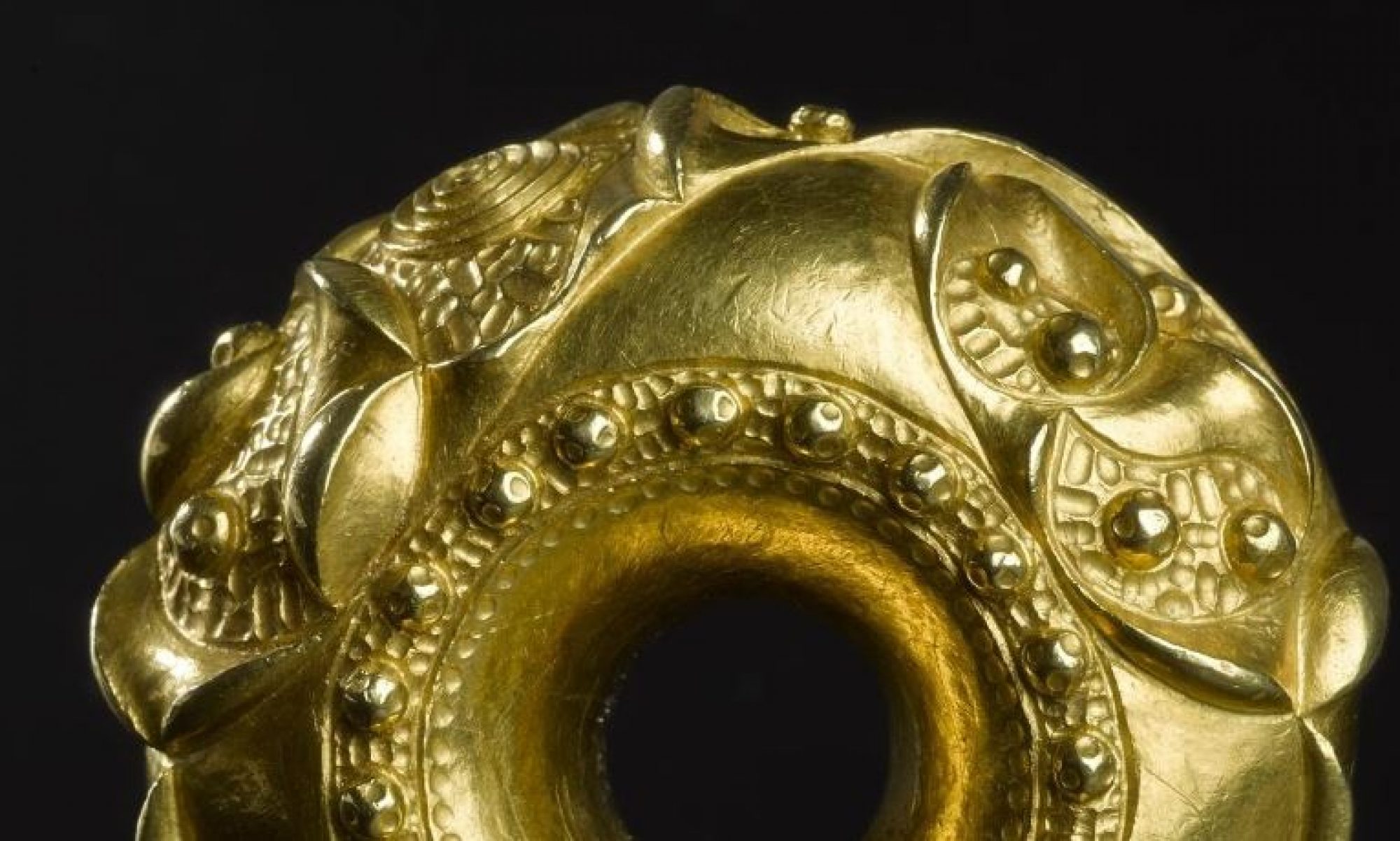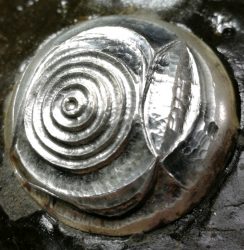Here we are again, and in this blog I’ll be trying to make the case that, although there may be a localised concentration of torcs in the Tamworth region, I do not believe this to be indicative of a local manufacturing centre and – in later blogs – I’ll be suggesting that the pattern of deposited single torcs could be linked to other factors, and might not even have happened in the Iron Age!
Of course, until I actually see the torcs, we could be lacking important additional evidence – or alternatively perhaps no additional evidence at all – as to how they were made and why they were buried where they were. Time will tell.
But back to the matter in hand!
Below is a map of all the torc finds in the vicinity, with the five under consideration in the centre. I can’t show you a full map of torcs across the country, as all I’ve got that illustrates that is my fabulous scribbled-all-over and stickered, A2 paper map (…don’t @ me, I’m a person who has to ‘do’ something physically to order my thoughts!!!) but you’ll have to trust me when I say that the spacing of torc finds beyond the ‘Staffordshire Five’ is about typical for torcs found broadly across the area we now call ‘England’, with a handful of torcs also from Scotland. [As an aside, we don’t have any torcs from what we now know as Wales and Cornwall: why is that? But I’m digressing again…]

The ‘cushion terminal’ torcs mentioned in the last blog are only seen – in this map area anyway – from Glascote and Needwood Forest, so in the 150km’ish range of this map, that is two torcs out of fifteen (when you include the four found at Leekfrith and three in the Alrewas bundle). As such ‘cushion’ torcs are hardly typical, and certainly not a ‘distinct’ Staffordshire/West Midlands group. There’s also no other ‘type’ of torc typical to this area: the range includes rod and wire neck rings (with many different types of simple, coiled, plaited and twisted wires) and torcs with ring, cap, thistle, funnel and torus terminals. I can’t yet show you photos of all of them as some are not yet public finds, but you’ll get the idea from the images below. It really is quite a range:
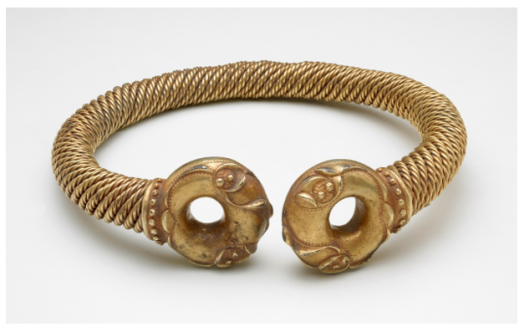





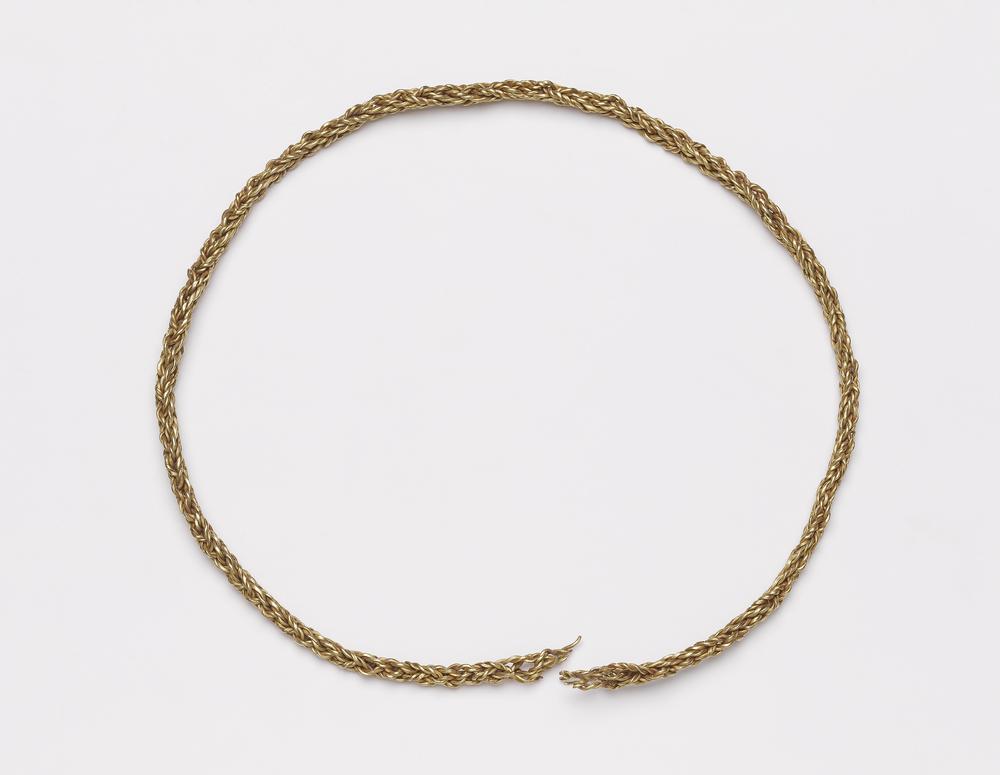

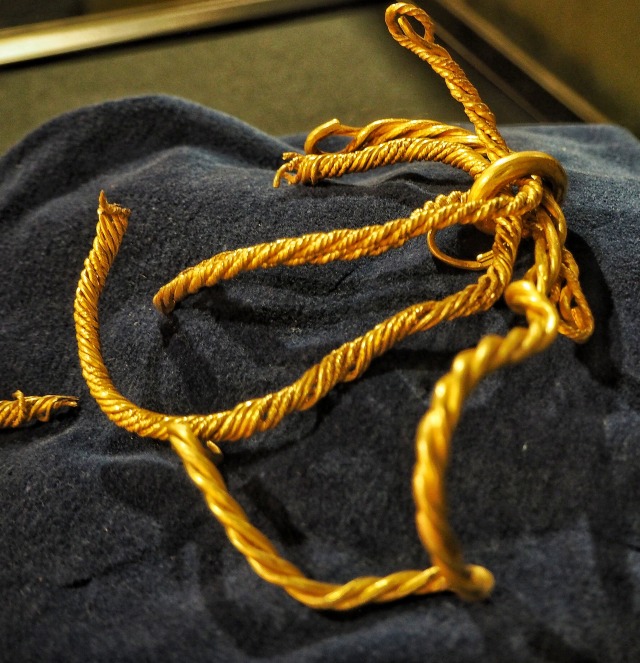
As an aside, in case you’re wondering, the different date of each torc may be a factor, with Shenstone and Leekfrith possibly of earlier manufacturing date than the rest. However, as we are not yet sure of the manufacturing dates for any Iron Age torc from these islands (for a wider discussion of this, see HERE) any absolute grouping/typology of torcs will always be fraught with difficulty.
If we look further afield – as discussed in a previous blog on ‘cushion’ torcs – there’s actually more torcs with ‘cushion’ terminals found beyond the Staffordshire/West Midlands area than within it, with five at least from East Anglia. In terms of decoration, the rick-rack and punched dots of the Glascote and Needwood Forest torcs can also be found on torcs from East Anglia and further afield, notable examples include the Netherurd terminal, the Snettisham Great torc, Snettisham torcs 1991,0407.34 and 1991,0407.22 and the South West Norfolk torc. As such I don’t think La Niece et al‘s “small group of twisted wire torcs with distinct ‘cushion’ terminals, centred on Staffordshire in the West Midlands” (La Niece et al 2018, 415), stands up to scrutiny.




However, I think Fox might have been onto something, in that there might be a connection with Ulceby, with one of the the torcs from this site showing a complex neck ring which echoes Glascote (but also several other torcs from Snettisham, so certainly not definitive).

I also think that the term ‘cushion’ is not entirely useful. I believe ‘cushion’ torcs are often better seen as one variation of a broader category of torcs which have extra gold alloy added to create larger terminals. These expanded terminals can be achieved using overcasting, which is a method of adding additional alloy, using a casting mould, over the top of – usually – wire ring terminals. It’s also possible that some terminals were made by dipping the terminals into molten gold/adding a slug of heated gold over the ring which was then hammered into shape, or by heating and then hammering the terminals into a single expanded shape, but I need to get a close up look to check that (but if any goldsmiths can work that out from the photos I’ve already got, do get in touch – maybe we need another term for this if it’s not just achieved using a casting technique? Additionally applied gold? Dunno).
Anyway, there are a number of variations of this type of terminal, of which ‘cushion’ torcs is only one type. But, for the reasons below, I don’t think it’s a valid descriptive term and, as I hope to show you, I think the term would be best used for another, very distinct, form!
Terminals with additionally applied alloy
These terminals are found across Britain, with numerous examples from East Anglia (although this does not mean they were made there, just where they ended up: my personal theory is that casting is a southern gold working trend, but where exactly they were made is still uncertain… but I’m digressing yet again…).
Firstly, there are simple terminals which just add alloy over a single wire ring terminal to thicken it. For example, below, the ring terminal 1991,0501.89 on the left would become the thicker terminal 1991,0407.20 on the right:


This can also be done where there are four wires, in double loops, like this Snettisham 1991,0407.19:

The same technique is also used when there’s more neck ring wires but in this case, the terminals often appear like double or triple fused terminals, often with lines of dots or rick-rack defining the undulating form of the terminal, like the Snettisham 1991,0407.34 and 1991,0407.22 terminals :


…and this is how we get to both Glascote and Needwood Forest – multiple wires, with gold alloy added over the wire ends/terminals and with decoration defining and hi-lighting the terminal form resulting from the wires beneath. As discussed above, these techniques are seen in both Staffordshire and East Anglia:

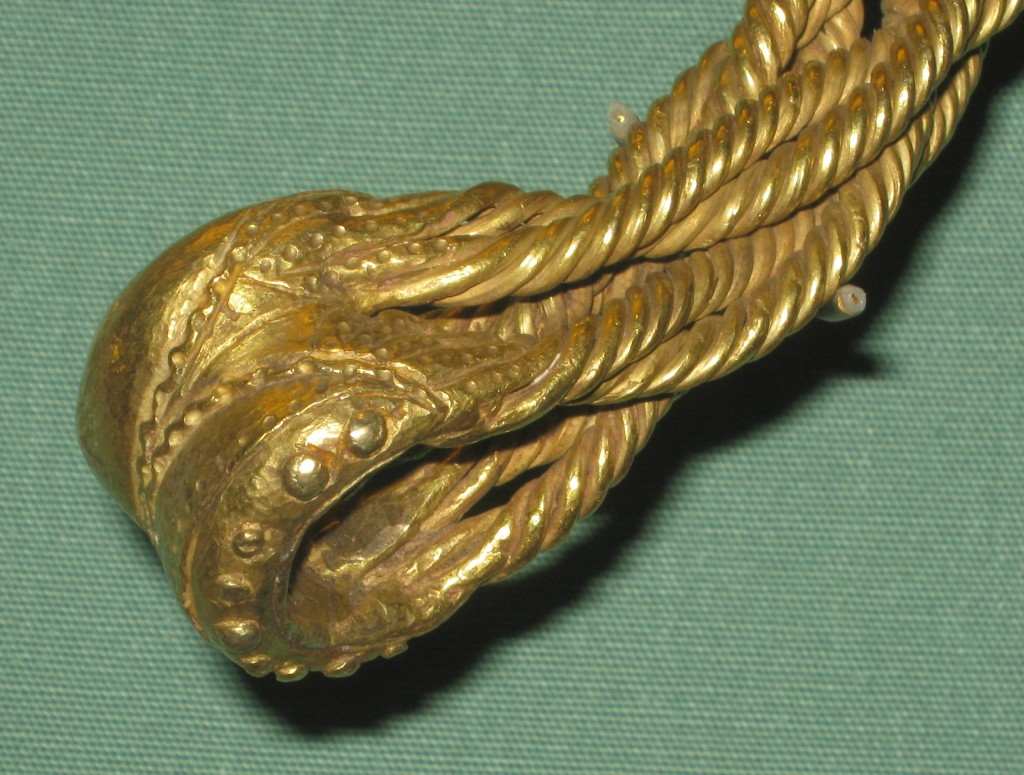
It’s also worth noting that our previous research has recognised that decoration often points to manufacturing techniques, for example, often overlying and identifying joins in torcs (Machling & Williamson 2020, 92). As such, the rick-rack of Glascote, or the lines of punched dots on Needwood Forest, may indicate how the torc terminals were put together. Again, only a closer look will tell.
The ‘real’ cushion terminal torcs
In addition to the above forms, there is also a very specific type of ‘cushion’ torc which, as well as the added alloy, also features an additional fillet of gold added between two thickened terminals. This form of torc terminal would be the one I’d be marking as a true ‘cushion’ terminal as it is highly specific and ‘distinct’…and actually looks like there’s a cushion between the terminals! But this form doesn’t occur in Staffordshire, only at Snettisham in torcs 1991,0407.36 and 1991,0407.15 (and possibly in the Newark torc where an additional hammered ring has been added to the terminal cast):


So, if we can’t see a distinct type of torc in Staffordshire/West Midlands, and especially not a ‘cushion’ terminal one, then what is it about the Tamworth cluster that makes it interesting?
But that’s a topic for the next blog: where they were found and what that might mean…
Until then, keep torcing and hit ‘Subscribe’ if you fancy being updated!
References
La Niece, S; Farley, J; Meeks, N & Joy, J. 2018. Gold in Iron Age Britain. In Schwab, R; Milcent, P-Y; Armbruster, B & Pernicka, E (eds), Early Iron Age Gold in Celtic Europe: Science, technology and Archaeometry. Proceedings of the International Congress held in Toulouse, France, 11-14 March 2015, 407-430. Rahden: Verlag Marie Leidorf GmbH
Machling, T. & Williamson, R. 2020. ‘Investigating the manufacturing technology of later Iron Age torus torcs’. Historical Metallurgy. 52, 2 (for 2018), 83-95. Available online. OPEN ACCESS
